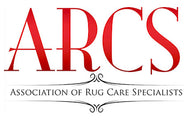Silk
Silk
Silk has been used in the textile industry for centuries. It was a mark of wealth and status to own objects made from such a lustrous and delicate fiber. The extra fine quality of silk fibers allow weavers to use incredibly small knots. The finest examples can have hundreds, or even thousands, of knots per square inch, allowing one to weave designs of great intricacy and detail. Unfortunately, the delicate nature of silk means that it cannot endure a lot of foot traffic and soiling. Old silk rugs in good condition are rare, and even new silk rugs can wear quickly. Due their delicate nature, silk rugs should be used in areas with little to no foot traffic or hung on a wall.
Cleaning silk rugs safely and effectively can be difficult; the dyes on newer silk rugs may prone to color-run, and there can be a texture change from the wash process that, even with proper grooming, can change the appearance of the rug. In today’s weaving, rugs are made with a variety of fibers. The higher price of silk has led to the development of other fibers that have been chemically treated to imitate silk.
On rug labels these fibers go by a variety of names; rayon, viscose, mercerized cotton, art silk, banana silk, and others. These fibers are often cellulosic, or plant based, in nature as opposed to the protein fiber of silk. Sometimes these fibers will used to weave an entire rug, but more often they are used in small areas to highlight a particular color or add a difference in texture. In general, real silk rugs tend to be more finely woven than those made with imitation silk, but fineness of weave is not a foolproof way to determine if a rug is made with silk or faux silk; only a chemical test can determine this. In addition to sharing the cleaning concerns of silk, because most of these imitation silks are cellulose based, they are also prone to browning and general discoloration.
There is more than one way to successfully clean these rugs. Methods can range from low moisture cleaning, which is safer for preventing color run and pile distortion but less effective at removing soiling, to a full immersion wash, which is a more thorough way to clean a rug but is riskier for these types of fibers. Factors that will help determine which cleaning method would be best for your rug include: weaving quality, rug condition, soiling and staining, and rug construction.
A rug with small highlights of silk can be treated differently than a rug that is all silk. There might be additional variables to consider as well. Before having one of these rugs cleaned, it is a good idea to have a conversation with your cleaner about the benefits and risks involved with the various cleaning methods they provide, so you can make the most informed choice for your rug.




